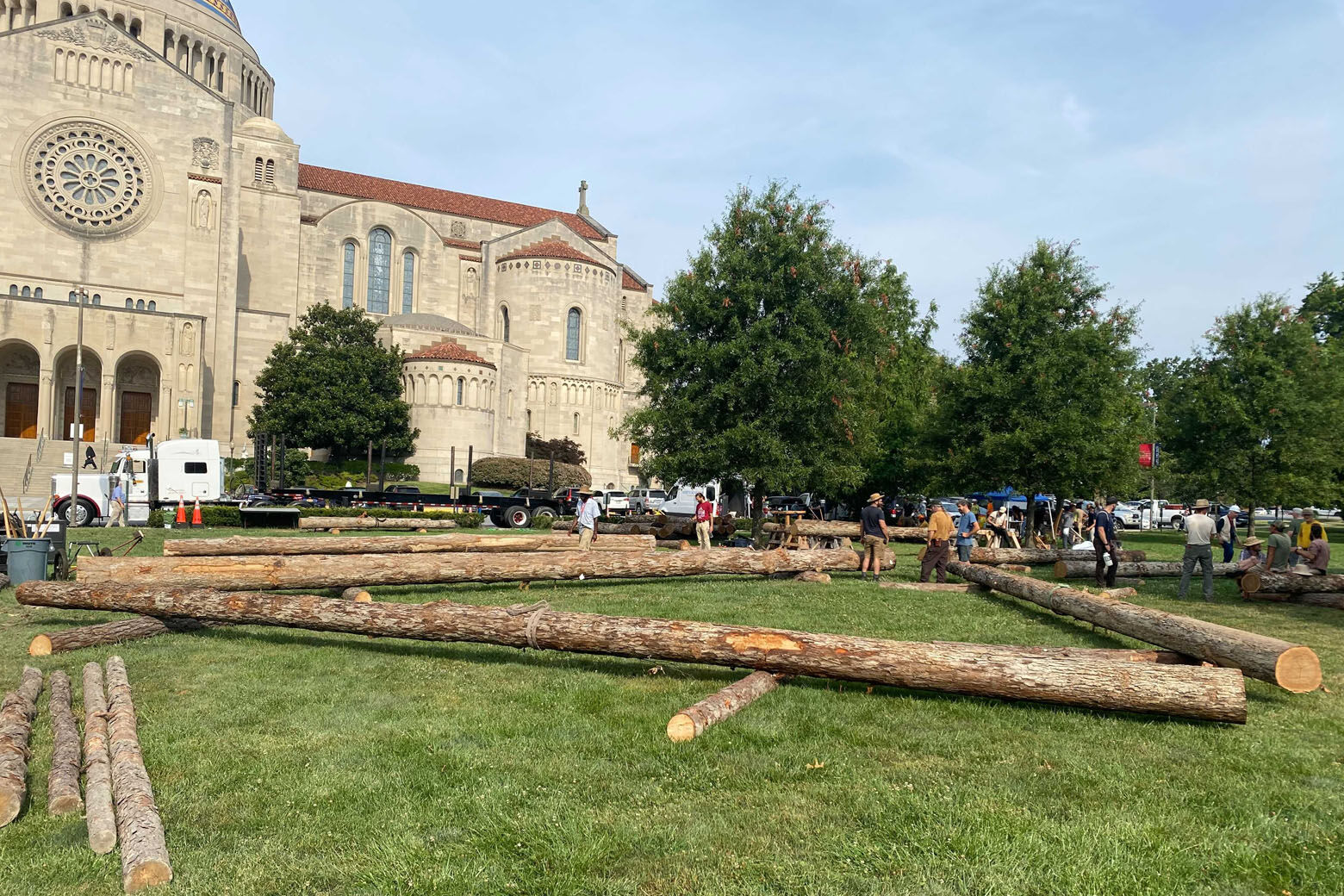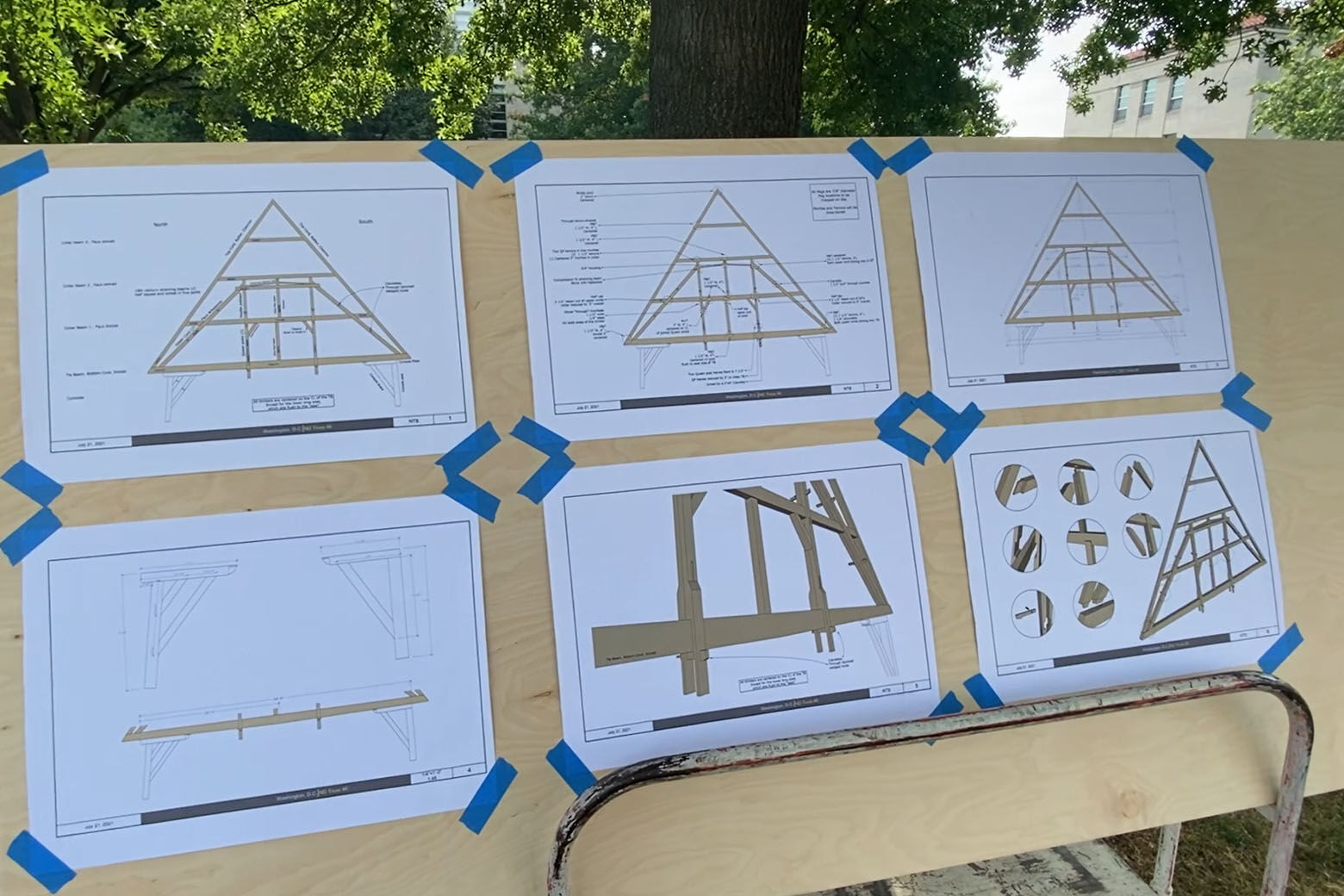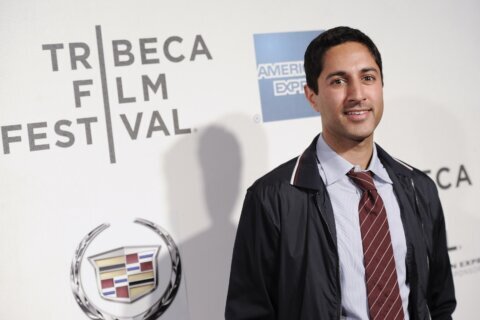
It’s hard to dispute that the Notre Dame cathedral in Paris wasn’t an architectural marvel. Constructed beginning sometime in the 1200s, it continued to hold religious services until the day it caught fire in 2019. Eventually it’ll hold those services again, but first it needs to be rebuilt.
The debate about how to do that is inspiring a summer project for some Catholic University students that’ll blow the way you remember shop class out of the water. Better yet, it might chop that perception down with an ax — literally.
Students in Tonya Ohnstad’s architecture class, along with timber framers and carpenters who work with the Massachusetts-based nonprofit Handhouse Studios, are building a replica of one of the trusses that holds up the roof of the cathedral.
They’re doing it the same way the original builders first did it centuries ago.
“We’re using medieval techniques to make the joinery for the truss,” said Alicia Spence, the project manager who works with Handhouse Studios. She added, “Really, when it comes to the timber structure, all you need is some string, some charcoal, and a couple of axes and you can build a cathedral. We’re using those same techniques.”
There was one concession to more modern technology: A crane was used to help get 46-foot long oak logs onto the Northeast D.C. campus. Once the logs were unloaded though, “the bulk of the work, the champion of the project, will be the ax, and in particular, the broad ax,” said Spence. “We have hand tools for boring holes for our pegs and it’ll be held together with pegs.”
Ohnstad said the project is a rare chance for architecture students to actually collaborate with builders on a project.
“I hope that the students get an experience that shows them the difference between modeling something and thinking of something on the computer and how it goes together in real life,” said Ohnstad.
They’ve already been practicing the techniques and processes on a smaller scale. Now it’s time to put together a piece of a structure 45 feet wide, that stands 35 feet high. They’ll have to do it without power tools and other technological advances that didn’t exist 800 years ago. But Ohnstad doesn’t think her students will mind.

“We spent the first four weeks learning” the things they’d need to know to make this a reality, she said. “I think that the students started to use more simple materials, simple tools, very quickly and felt that you can get the same results out of those tools. I don’t know that they’re going to think this is more difficult. I think they’re going to think this is a very good way to do it.”
Spence hopes others, those in charge of rebuilding the actual Gothic cathedral in France, also see it that way.
“The French government has a real task in front of them to bring it back to life,” admitted Spence. “There’s a lot of modern ways to put a roof on, but the people here … really believe that the human effort that goes into it is kind of an embodied energy that is right for that sort of building so we are hoping to physically throw our vote of support that we rebuild the roof as was, by hand. Even though when you go into the cathedral the roof is not something you’d immediately see, we feel it’s an important part of the building.”
She said authorities are already leaning toward doing it that way. This truss will be raised on the Catholic University campus, right next to the Basilica, on Aug. 3. It’s also slated to spend a day on the National Mall.
“It’s just such an exciting project to get our hands into after this crazy year,” said Ohnstad.








